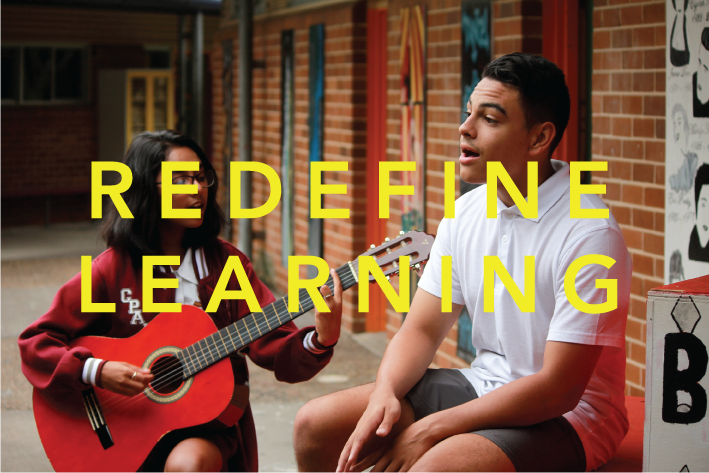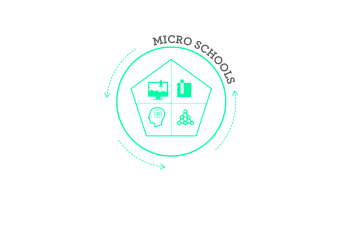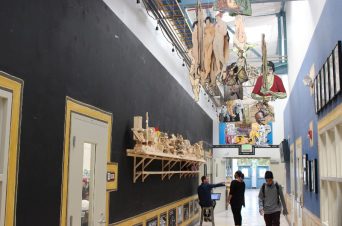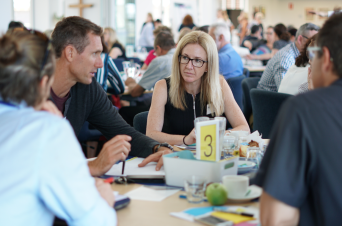
Engaging in work that matters
blog | 18 Jul 2017
In the first of two posts, Stacey Quince, Principal at Campbelltown Performing Arts High School, reflects on the journey her school is taking to transform the purpose and nature of learning.
Campbelltown Performing Arts High School (CPAHS) is a public school located in South-Western Sydney with 1100 students. Approximately 40% of our students enter via audition in to dance, drama, music and circus and 60% come from our local area. Our students come from from 56 language backgrounds and 112 identify as Aboriginal. 44% of our students are in the bottom quarter of socio-economic disadvantage and only 5% are in the top quarter. It is a dynamic, diverse and incredibly rewarding place to work.
The case for radical change in education
There is little doubt that we are currently in the most challenging and exciting period that education has ever known. The rapidly changing world in which we live and the urgency with which we need to attend to the emerging issues facing our young people is unprecedented.
There has never been so much noise about what education should and could look like – from politicians, the media, business, parents, and the broader community. It seems everyone has an opinion about what we should be doing and how we should be doing it. Unfortunately, this plethora of noise is often not helped by an increasingly divisive debate within our own profession. Some argue for the need to implement only research-based approaches that have been (and continue to be) successful, as evidenced through high stakes assessment. Many of these voices argue that we are compromising the quality of education if we move beyond what is known. Others argue that we are putting our young people, and indeed humanity, at risk if we do not radically change the way we engage young people in education and prepare them for a future that is unquestionably very different to our present.
What is missing from this discourse is robust discussion about the very purpose of education as we experience this rapidly transforming world. Valerie Hannon’s new book Thrive: Schools reinvented for the real challenges we face addresses this very issue, drawing on extensive research to illustrate a confronting future that should be shaping our education models, and identifying pathfinder schools and educators who are demonstrating what this fundamental change can look like in practice.
Seeds of a powerful partnership
Whilst we have always sought to prepare students for the world beyond school at Campbelltown Performing Arts High School (CPAHS), our ongoing partnership with Innovation Unit has significantly deepened our understanding of why we need to do this, what it could look like and how we can make this a reality for our students, our teachers and our community.
I was first introduced to Innovation Unit when Valerie Hannon (Board Director) and Keren Caple (CEO of Innovation Unit Australia but then General Manager of AITSL) visited CPAHS as part of the Global Education Leaders’ Partnership (GELP) early in 2013.
At the time, we had been working hard for some years to transform our practice from the one-size-fits all model of schooling and so we were excited but a little nervous to host 15 participants from all corners of the globe. Luckily, however, they provided positive and useful feedback to our school and our Minister about what they saw. Little were we to know that this visit would be the catalyst for a period of accelerated innovation that would become a turning point for our school.
The visit led to our inclusion in a Sydney Community of Practice – a ‘design hub’ – for the Learning Frontiers initiative led in collaboration by Innovation Unit and the Australian Institute for Teaching and School Leadership (AITSL). The program was a national, cross-sectoral, collaborative enquiry into professional practices that increase student engagement in learning; bringing together diverse school-based hubs from across the country to explore how user-centred design methods might address the stickiest challenges through deep engagement.
Introducing disciplined innovation
It was through Learning Frontiers that we were introduced to a language that made no sense to us to begin with but that we now see was critical to the development of new practices, as opposed to the re-badging of old ones. At the time, terms like “disciplined innovation”, “design thinking”, “user experience”, and “hackathon” were completely foreign. Now this language is used more extensively across education – at least partly because of Innovation Unit’s influence. Ironically, it is this shared language among teachers and students about what we do and how we undertake our work at CPAHS – language that is now part of our vernacular but that is underpinned by a deep, shared understanding of our purpose and practices – that is frequently commented upon by educators when they visit us.
Our work with Learning Frontiers also significantly influenced how we understood our purpose as educators. It was certainly about more than lifting test scores, and sowed deep roots for the work that was to come. Through the program we were introduced to design principles, shaped by research from the OECD and the work of GELP, that underpinned student engagement. We worked hard to develop learning experiences informed by these principles – learning that was co-created between students and adults, personalised and drew upon student passions, connected to real world contexts and contemporary issues, and integrated across subjects, contexts and year groups. These design principles have stood the test of time, shaping our ongoing dialogue about learning, underpinning our school plan and providing a core reference point for our teaching and learning.
Students were now involved in doing more work that mattered – to them and to a broader audience. As a school we explored and scaled the implementation of new and emerging pedagogies, like project-based learning integrated with design thinking, so that students could develop agency and create products and services in response to real challenges that they identified. One of many examples saw students designing signage and interactive play boards for local parklands, and publishing books focused on local issues of biodiversity in partnership with local council and other experts in order to make a real difference to their local community.
Through this work, Innovation Unit presented us with a challenge – to better meet the needs of our students for the future they faced – and gave us the confidence, the tools and the support to accelerate the search for powerful learning experiences that could be scaled within our school and shared more broadly with our profession.
More Like This

Is the UK in Need of a Micro School Revolution?
Thinking about new solutions for how we ‘do’ education, schools and learning has never been more important, but neither has it been more difficult.
30 Nov 16

Most Likely to Succeed? Not currently.
What should the future of schooling in England look like and how can we make it happen?
01 Nov 16

Unleashing Brilliance: ELEVATE
Innovation Unit Australia are collaborating with AISNSW to co-design a cross sectoral program that responds to the needs of learners, and create responsive teaching strategies that ignite their individual passions and optimise their strengths.
14 Dec 18